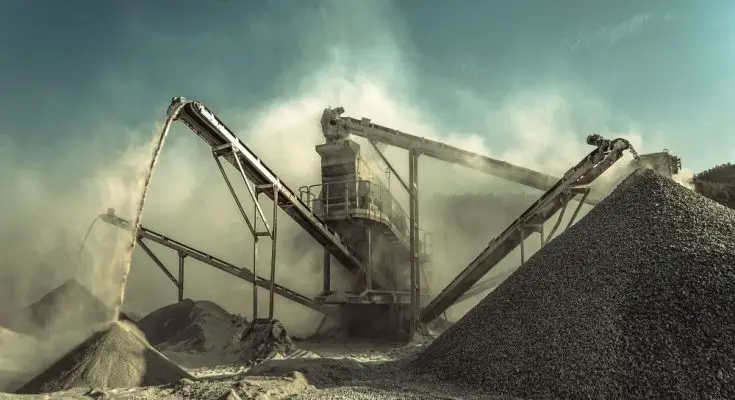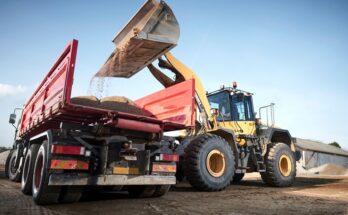We see quarries all over the country, and the substances within help us pave roads and build buildings. But do you ever wonder how rock becomes concrete?
Rock crushers mill raw materials like sandstone or lime into concrete. Rocks and minerals unearthed from quarries go through a crushing process to become useful in construction—rocks become aggregate, which is the base to concrete.
The aggregate process uses multiple rock crushers. They are used at different points within the three stages of the milling process: primary, secondary, and tertiary.
Explore the different types of rock crushers to find out how quarries help build the world around us!
Jaw
Used in the primary stage, jaw crushers have the job of breaking down rocks into a manageable size to be moved down a conveyor belt to the next step in the milling process. In a general sense, jaw crushers “chew” the rocks as we do with food.
But instead of both jaws meeting together, one slides front to back. A fixed jaw remains still while the moving jaw moves back and forth, grinding down the material, resulting in the coarsest material in the milling process.
Cone
Named after its shape, a cone crusher is used in the secondary stage and sometimes in the tertiary phase. Essentially, cone crushers compress material that has passed through the jaw crusher. Like the jaw crusher, one part is stationary while another moves, creating a squeezing motion that can be preset to turn the rock into a pre-determined size.
The material grows smaller and smaller as it is pushed through the cone crusher, falling out at the bottom. From there, the conveyor belt carries the rock onto the impact crusher at the tertiary stage.
Impact
Impact crushers mill the material with speed! The belt feeds the impact crusher; from there, the crusher flings the rock against breaker bars to pulverize the material. While a jaw crusher “chews” and a cone crusher squeezes, an impact rotates the material at intense speeds to break it down in its final stage.
Keep in mind, this guide to the types of crushers is a simplistic view of the milling process; there are more nuances to creating aggregate, like the importance of wear liners to break down rock. Workers monitor the liners for signs that the crushers need new liners and other wear and tear to this vital equipment.
But even a rudimentary understanding of the different types of rock crushers can help us understand how rocks become the building blocks of our cities!



